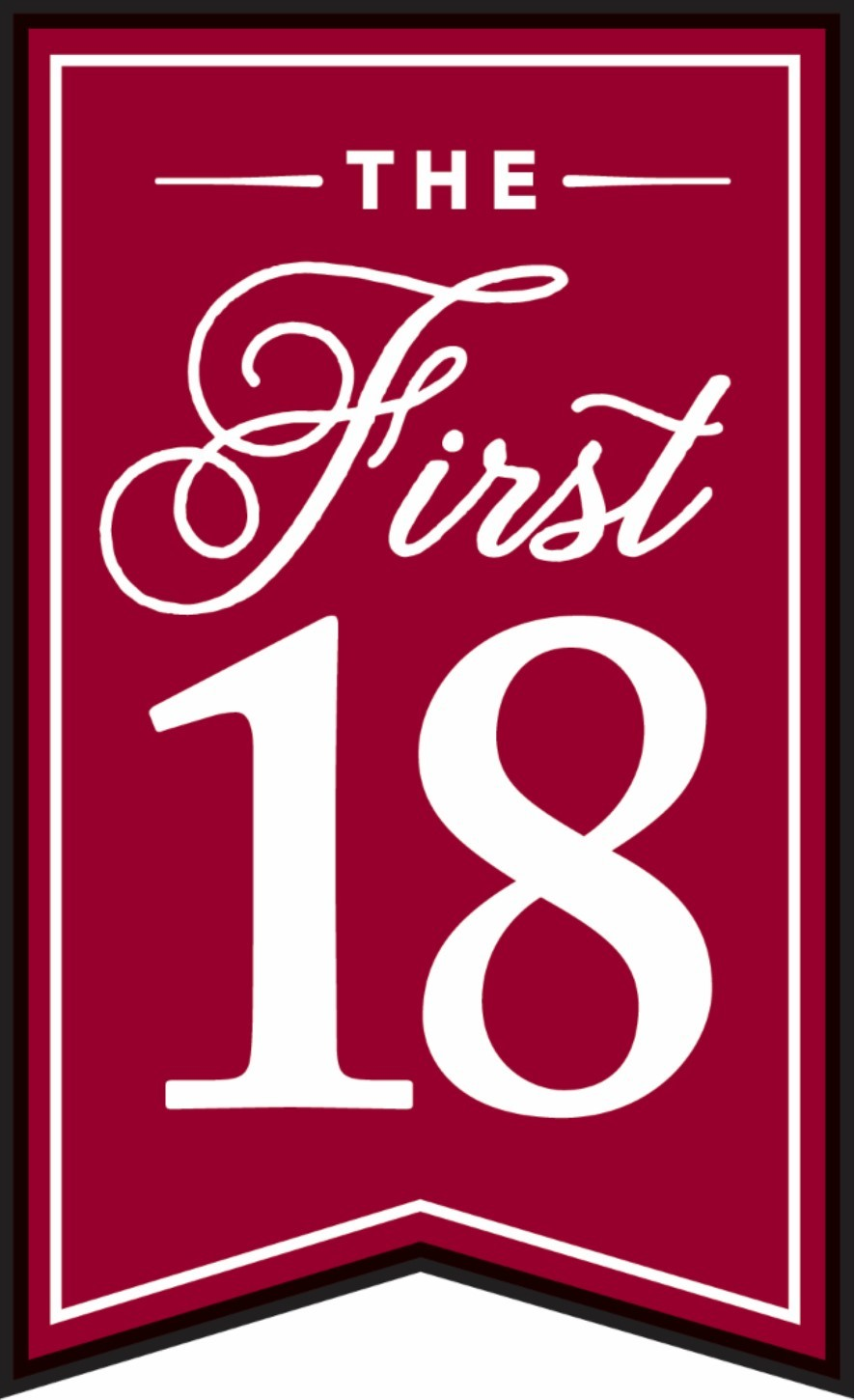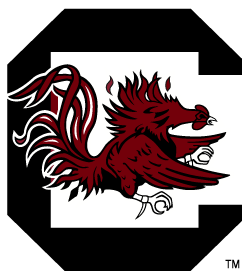
Video: The First 18 - Basketball, Honored to Wear Garnet & Black
Oct. 14, 2015
Part 4 of a 6 part series on South Carolina’s first female scholarship student-athletes.
Click here for the full First 18 Digital Presentation with new stories appearing each day this week.
The excitement and success surrounding South Carolina women’s basketball resulted in the Gamecocks leading the nation in home attendance last season. Forty years ago, Martha Suber and Denise White were excited simply to put on a jersey with the occasional chance to play a game inside the Carolina Coliseum in front of a handful of people. Suber and White (formerly Denise Nanney) were among the first 18 women to receive athletics scholarships at South Carolina in 1975, three years after the passage of Title IX.
“When I played my last high school game, I thought that was the end of my basketball career,” said Suber, a native of Whitmire, South Carolina. “I had lived for basketball growing up in the textile leagues. We had organized basketball from the time I was six years old going up through high school, but then it was over.”
“My high school didn’t have any sports, so I had to play city league and rec leagues,” White said. “When I found out that South Carolina had a girls basketball team, I was ready to go right then and pack my bags because I was always attracted to Frank McGuire and the boys basketball team. So the thought that I was going to get to go down there and be around them; I was ready to go.”
They played against some of the all-time greats, including Nancy Lieberman of Old Dominion, but the road to equality wasn’t always perfect.
“We all have to appreciate our history and know where we came from so we know where we’re going and appreciate what we have,” Suber said. “That was a powerful piece of legislation that changed a lot of things. At the time, we were just kids and didn’t know what it was about.”

Becoming Part of the First 18
After the implementation of Title IX, South Carolina made 18 scholarships available for female student-athletes for the first time in school history in 1975, with three going to each of the six sports. Suber and White had already been playing at South Carolina before scholarships were offered. Operating more like a club program previously, the women’s teams would now be under the direction of the athletics department.
“I remember there was rumor going around that there was going to be scholarships and everyone was wondering if they were going to get new people or are they going to keep the ones who are here,” White recalled. “We didn’t really know. It wasn’t what you’d call a full scholarship today, but we were happy with it.”
“It was just an honor,” Suber added. “My daddy was happy he didn’t have to write a check. A scholarship was like someone throwing a little gravy on top of the rice because we were just happy to be here playing.”
Suber and White had also played on the softball team, with Suber also previously playing on the women’s golf team. Most of their teammates were not on scholarship, but neither felt any additional pressure to perform because they were driven to play their best before they received the scholarship.
“I was pretty naïve to the politics that were going on at the time,” Suber said. “I was just a kid playing ball and having fun. Looking back, I realize there were a lot of folks who weren’t really pleased that money was being put into the women’s program. They were afraid it was going to take away from the men’s program. I was oblivious to all of that. I don’t know that there was any extra pressure.”
The women’s teams were called “the Chicks” for a short time, and the reviews of that nickname weren’t popular with everybody.
“That was embarrassing,” White said. “I didn’t like that name at all.”
Unglamorous Beginnings
Getting a scholarship was one thing, but these were still humble beginnings, especially compared to what student-athletes of today are accustomed.
“They used to kid me because I would wear black Chuck Taylor tennis shoes, and I still do,” Suber laughed. “We provided our own shoes and our own socks. They gave us a practice jersey and a uniform. We had a travel bag too. I still have my little bag.”
In addition to a lack of gear afforded to the student-athletes, travel conditions weren’t always ideal, especially in the years before the scholarships were given.
“I can remember some trips in my Volkswagen van getting us to and from games,” Suber said. “We provided our own transportation some times. Normally the university provided us with a van.”
“We’d be packed in their like sardines,” White said.
What’s carried over for me was perseverance. You never give up. Give it your all with everything that you do.
Denise (Nanney) White
The student-athletes taped their own ankles most of the time, but the teams would later have access to a real athletics trainer. There were other challenges as well.
“We were completely on our own as far as academics and keeping up,” White said. “When you had some away games in succession, it was kind of tough. Some of the professors just didn’t tolerate it.”
“Keeping up with academics was hard because we didn’t get cut any kind of slack,” Suber said. “We didn’t have tutors or a facility for helping us with our academics. I remember some of the professors treating us harder because they didn’t want us to feel like we were getting special treatment.”
Today’s student-athletes have access to nutritionists and well-balanced meals. Things were different in 1975.
“Our coach use to love to feed us, and I used to love to eat,” Suber chuckled. “So we’d be getting ready to play a game, and we’d go to a steakhouse. There was no looking at our diets.”
Game Day Isn’t What It Used to Be
Finding a seat at a South Carolina home women’s basketball game isn’t easy now. In 1975, it wasn’t easy for the team to get on the court. The team had had to reserve courts at the Blatt P.E. Center for practice and sometimes they could only get half of a court. Most of the games were played there at the P.E. Center, but they did a have a few inside the hallowed halls of the Carolina Coliseum which was the place-to-be for men’s basketball at that time.
“When we first went in there, they had the tartan floor which made me think I could jump higher,” White said. “I can remember Frank McGuire being at some our games and sitting on the front row.”
“I remember hearing my name called out over the loud speaker when we were in here,” Suber said while visiting the Carolina Coliseum recently. “That was a pretty big deal.”
Women’s basketball didn’t have the national appeal it enjoys today, and the crowds inside the Coliseum were “intimate.” to say the least.
“We knew everybody in the stands,” White said. “Some people’s parents would come. When we got to play at the Coliseum, let’s say before the boy’s game, then towards the end of our game people started coming in and it looked like we had a big crowd. Then there would be a band, and when we finished, the fight song was played, and I guess we felt like they were there for us.”
“I have a picture of Denise and I coming off the bench, getting ready to go into the game, and it happened to catch the stands behind us,” Suber said. “They were completely empty in that shot. I saw the record breaking crowds that they had last year. We’ve come a long way.”
Despite what might seem like hardships now, Suber and White are giddy in recalling their best memories.
“I absolutely loved it here,” White said. “For me to get to wear a Gamecock uniform, I just thought I was the best person in the state, being lucky enough to be a Gamecock.”
“The times with the team were the best part,” Suber said. “We had some really close bonds and we had an awful lot of fun. Being part of the team was the most fun to me.”

Putting It All Into Perspective
Donning a Gamecock uniform seemed like enough to fulfill a dream 40 years ago, but now White and Suber enjoy a clearer perspective on what it meant for women’s athletics to be taken seriously and to keep dreams alive for future generations of female athletes.
“I was really a part of something that is really big now,” Suber said. “To know that I had a place in that, it makes me feel good. I enjoy telling people the stories. It’s been one of the highlights of my life.”
“I felt really honored and really blessed to get it,” White said. “I never thought about us being the first ones and that it would mean anything. When we got the scholarships, we wanted to play really hard. We all went out there and played as hard as we could every game. There were other players who were here when we first got here. I think those people should be proud too.”
A common theme in hearing from members of the First 18 is that their experience at South Carolina paved the way for their future. White coached basketball at Dorman High School for 10 years and later coached softball at Murrells Inlet.
“Coach Frankie Porter was a big influence on me,” White said. “It had a 100% effect on what I wanted to. What’s carried over for me was perseverance. You never give up. Give it your all with everything that you do. There are other things in life, other than sports, where I’ve been able to apply that.”
Suber became a P.E. teacher and administrator and is currently an assistant principal back in her hometown of Whitmire. She was asked to speak at the last minute at a high school graduation one year, so she used her experience at South Carolina in an impromptu speech.
“My slogan for that speech was `suit up, show up and work hard; you never know who might be watching,'” Suber said. “One of the stories I told was that I didn’t even know how to go out for the basketball team here. I was just shooting inside and outside, and this lady came up and asked if I was going to go out for the team. It was the former coach.”
White and Suber hope the student-athletes of today will appreciate the opportunities they now have.
“I tell high school athletes to just appreciate what you do have, especially with the coaching,” White said. “The weight training and conditioning that you get good information on, and all the extras they get here now, like eating from the training table and things like that – just be grateful for all the extras you get.”
“It was really hard for me for a lot of years to even watch a basketball game on TV, because I thought, gosh, we just came along a little too early,” Suber said. “If you’re coming along now, you have to be very good and dedicated from an early age, but the opportunities that are there are just so plentiful. They just need to be grateful for those opportunities because they weren’t there when we came along. It’s hard not to be a little bit angry about that, but I think I’ve grown past it.”












